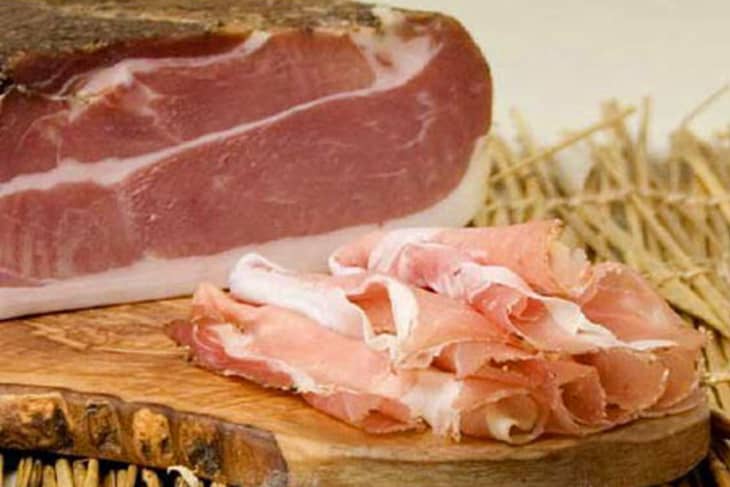Ingredient Spotlight: Speck
Sorry, prosciutto, but we think we’re falling in love with speck! Its smokiness and subtle herb flavor has us entranced, and we’ve found ourselves sneaking it into everything from omelets to pasta sauces.
But what exactly is speck?
Speck comes from the northern Italian region of Alto Adige, where the cool dry climate is perfect for curing meats–or so say the local producers! Like our much-loved prosciutto, speck is made from the hind leg of a pig, though the leg is boned before curing. Speck is also given a two-part curing process: First it’s rubbed with a blend of spices and salt-cured in the Mediterranean style, and then it’s cold-smoked in the central European tradition. Though the specific recipe of spices is a well-kept secret, it’s usually a blend of juniper, pepper, bay or laurel, and garlic.
Speck is deeply red and more firm in texture than prosciutto. Since it’s a cured meat, it can be sliced thin and eaten raw in an antipasti platter, wrapped around sweet fruits, or layered on sandwiches. It also holds up well in cooking, giving dishes a smoky flavor similar to bacon but without a lot of extra rendered fat. You can use it in place of bacon, pancetta, or prosciutto in most recipes. We also happen to know that a few slices of speck with a hunk of cheese makes an excellent midnight snack.
Speck is slowly edging into the US market and might take a bit of searching before you find a source. Ask for it at specialty food markets or order yourself a few pounds online from places like Formaggio Kitchen or La Quercia.
(Photo: Formaggio Kitchen)
Recipes from the Kitchn:
Juno’s Pregnant Dates
Strozzapretti
Roasted Asparagus with Poached Egg and Parmesan
Related Links:
Seasonal Recipe Spotlight: Ginger
<a href="//www.thekitchn.com/ingredient-spotlight-what-is-g-43841" ingredient="" spotlight:="" what="" isgalangal a="">
Inspiration: Nurturing Foods
